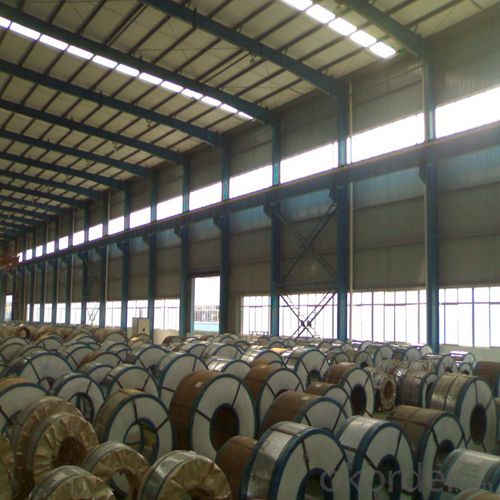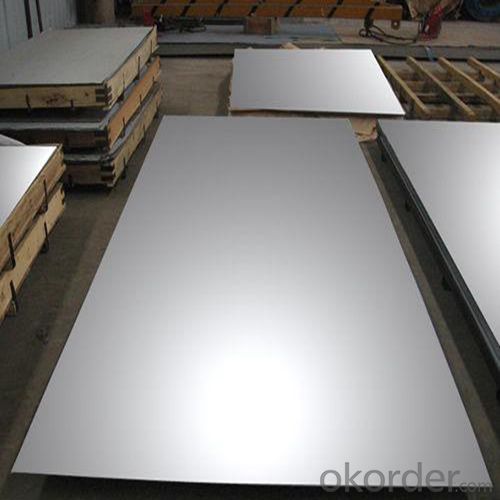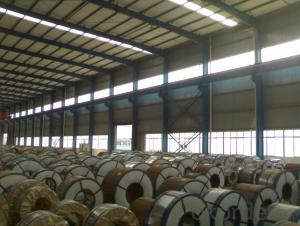Electrolytic Tin Plate Coils and Sheets for Foods Metal Packaging
- Loading Port:
- Tianjin
- Payment Terms:
- TT OR LC
- Min Order Qty:
- 25 m.t
- Supply Capability:
- 7000 m.t/month
OKorder Service Pledge
OKorder Financial Service
You Might Also Like
1.Structure of Electrolytic Tin Plate Coils and Sheets for Foods Metal Packaging Description
Electrolytic Tin Plate Coils and Sheets for Foods Metal Packaging, is one thin steel sheet with a coating of tin applied by electrolytic deposition. Tinplate made by this process is essentially a sandwich in which the central core is strip steel. This core is cleaned in a pickling solution and then fed through tanks containing electrolyte, where tin is deposited on both sides. As the strip passes between high-frequency electric induction coils, it is heated so that the tin coating melts and flows to form a lustrous coat.
2.Main Features of the Electrolytic Tin Plate Coils and Sheets for Foods Metal Packaging
Appearance – Electrolytic Tin Plate is characterized by its beautiful metallic luster. Products with various kinds of surface roughness are produced by selecting the surface finish of the substrate steel sheet.
Paintability and printability – Electrolytic Tin Plates have excellent paintability and printability. Printing is beautifully finished using various lacquers and inks.
Formability and strength – Electrolytic Tin Plates have got very good formability and strength. By selecting a proper temper grade, appropriate formability is obtained for different applications as well as the required strength after forming.
Corrosion resistance – Tinplate has got good corrosion resistance. By selecting a proper coating weight, appropriate corrosion resistance is obtained against container contents. Coated items should meet 24 hour 5 % salt spray requirement.
Solderability and weldability – Electrolytic Tin Plates can be joined both by soldering or welding. These properties of tinplate are used for making various types of cans.
Hygienic – Tin coating provides good and non toxic barrier properties to protect food products from impurities, bacteria, moisture, light and odours.
Safe – Tinplate being low weight and high strength makes food cans easy to ship and transport.
Eco friendly – Tinplate offers 100 % recyclability.
Tin is not good for low temperature applications since it changes structure and loses adhesion when exposed to temperatures below – 40 deg C.
3.Electrolytic Tin Plate Coils and Sheets for Foods Metal Packaging Images



4.Electrolytic Tin Plate Coils and Sheets for Foods Metal Packaging Specification
Standard | ISO 11949 -1995, GB/T2520-2000,JIS G3303,ASTM A623, BS EN 10202
|
Material | MR,SPCC |
Thickness | 0.15mm - 0.50mm |
Width | 600mm -1150mm |
Temper | T1-T5 |
Annealing | BA & CA |
Coil Inner Diameter | 508mm |
Weight | 6-10 tons/coil 1~1.7 tons/sheets bundle |
Passivation | 311 |
Oil | DOS |
Surface | Finish,bright,stone,matte,silver |
5.FAQ of Electrolytic Tin Plate Coils and Sheets for Foods Metal Packaging
- How are the Electrolytic Tin Plates specified?
The Electrolytic Tin Plates are specified as per the steel base, extent of tempering, the coating weight, annealing method and the surface finish.
- How many types there are for base steels?
The base steels are of three types: Type MR, L, D
- Q:How big is the difference between tinplate and stainless steel 316L?
- 316L is a kind of austenitic stainless steel with excellent corrosion resistance. The tinplate is not comparable. 316L is superior to tinplate in appearance, corrosion resistance, heat resistance and strength. Of course, the price is much higher than that of tinplate.
- Q:How does tinplate packaging handle exposure to different chemicals?
- Tinplate packaging is known for its excellent resistance to various chemicals. It can handle exposure to different chemicals without any significant adverse effects, making it a reliable choice for packaging materials.
- Q:What are the limitations of printing on tinplate?
- There are several limitations to printing on tinplate. Firstly, tinplate is a relatively rigid material, making it difficult to print on curved surfaces or complex shapes. Additionally, the smoothness of the tinplate surface can pose challenges for adhesion and ink absorption, which may result in poor print quality or color accuracy. Furthermore, the printing process on tinplate is often limited to a single color or a limited color palette, which can restrict the design options and creativity. Lastly, the durability of the printed design on tinplate may be compromised over time due to exposure to external factors such as moisture, heat, or scratching.
- Q:What are the typical finishing options for tinplate products?
- The typical finishing options for tinplate products include painting, printing, coating, embossing, and varnishing. These options not only enhance the appearance of the tinplate products but also provide protection against corrosion and improve overall durability.
- Q:What are the potential health risks associated with tinplate packaging?
- The potential health risks associated with tinplate packaging are primarily related to the presence of bisphenol A (BPA), a chemical used in the lining of some tin cans. BPA can potentially leach into the food or beverage stored in the can, and prolonged exposure to BPA has been linked to various health issues, including reproductive disorders, cardiovascular problems, and certain types of cancer. However, it's important to note that many countries have regulations in place to limit BPA levels in packaging materials, and alternative lining materials are being developed to minimize these risks.
- Q:What are the main applications of tinplate in the pharmaceutical industry?
- Tinplate is commonly used in the pharmaceutical industry for the production of packaging materials such as containers, tubes, and caps. It provides excellent barrier properties against moisture, light, and gases, ensuring the integrity and stability of pharmaceutical products. Tinplate is also easy to sterilize, making it suitable for storing drugs and medical devices. Additionally, its durability and tamper-proof properties make it a reliable choice for ensuring product safety and extending shelf life in the pharmaceutical industry.
- Q:Can tinplate be used for high-temperature applications?
- No, tinplate is not suitable for high-temperature applications as it has a low melting point and may lose its structural integrity at elevated temperatures.
- Q:What are the advantages of using tinplate for household appliances?
- There are several advantages of using tinplate for household appliances. Firstly, tinplate is highly resistant to corrosion and rust, ensuring the longevity and durability of the appliances. Additionally, tinplate provides excellent heat resistance, making it suitable for appliances that generate high temperatures. Furthermore, tinplate is lightweight yet strong, allowing for easy handling and transportation of the appliances. Lastly, tinplate is a sustainable and eco-friendly material, as it is recyclable and reduces the carbon footprint of the manufacturing process.
- Q:What's the advantage of metal containers in packing tea?
- Tin cans are internationally recognized food standards for iron packaging. Tinplate contains tin containing selenium, these are good for the human body. Print recognition is good. Good printing effect in tinplate, generally in high-grade tea can now use tin cans. It can damp and damp. Environmentally friendly, rugged and easy to carry.
- Q:Can tinplate be used for pharmaceutical blister packaging?
- Yes, tinplate can be used for pharmaceutical blister packaging. Tinplate is a commonly used material for packaging due to its durability, corrosion resistance, and ability to protect the contents from moisture and light. It is a suitable option for pharmaceutical blister packaging, as it helps maintain the integrity and quality of the medication.
1. Manufacturer Overview |
|
|---|---|
| Location | |
| Year Established | |
| Annual Output Value | |
| Main Markets | |
| Company Certifications | |
2. Manufacturer Certificates |
|
|---|---|
| a) Certification Name | |
| Range | |
| Reference | |
| Validity Period | |
3. Manufacturer Capability |
|
|---|---|
| a)Trade Capacity | |
| Nearest Port | |
| Export Percentage | |
| No.of Employees in Trade Department | |
| Language Spoken: | |
| b)Factory Information | |
| Factory Size: | |
| No. of Production Lines | |
| Contract Manufacturing | |
| Product Price Range | |
Send your message to us
Electrolytic Tin Plate Coils and Sheets for Foods Metal Packaging
- Loading Port:
- Tianjin
- Payment Terms:
- TT OR LC
- Min Order Qty:
- 25 m.t
- Supply Capability:
- 7000 m.t/month
OKorder Service Pledge
OKorder Financial Service
Similar products
New products
Hot products
Related keywords




























